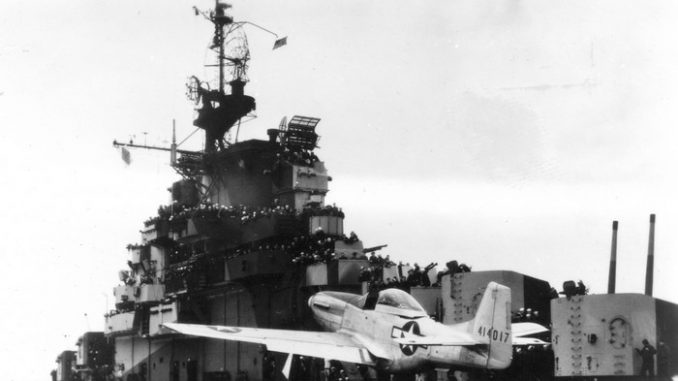
By Gaëtan Marie of Bravo Bravo Aviation.
With a surface of 69 millions square miles, the Pacific Ocean covers nearly a third of the Earth’s surface. During World War II, military operations in the Pacific were confronted with the problem of range. This was particularly true of aerial operations. Mainland Japan was bombed on 18 April 1942 by Doolittle and his raiders, but that was a one-time effort of mostly psychological value. All of the 16 aircraft involved were lost, and 11 of the 80 raiders were either killed or captured. After that, no bombing raids were flown against the Japanese Home Islands until the second half of 1944 when B-29 long-range bombers were used from bases in China and later the Marianas islands. These raids were unescorted as no fighter had the range to escort the bombers all the way to Japan and back.
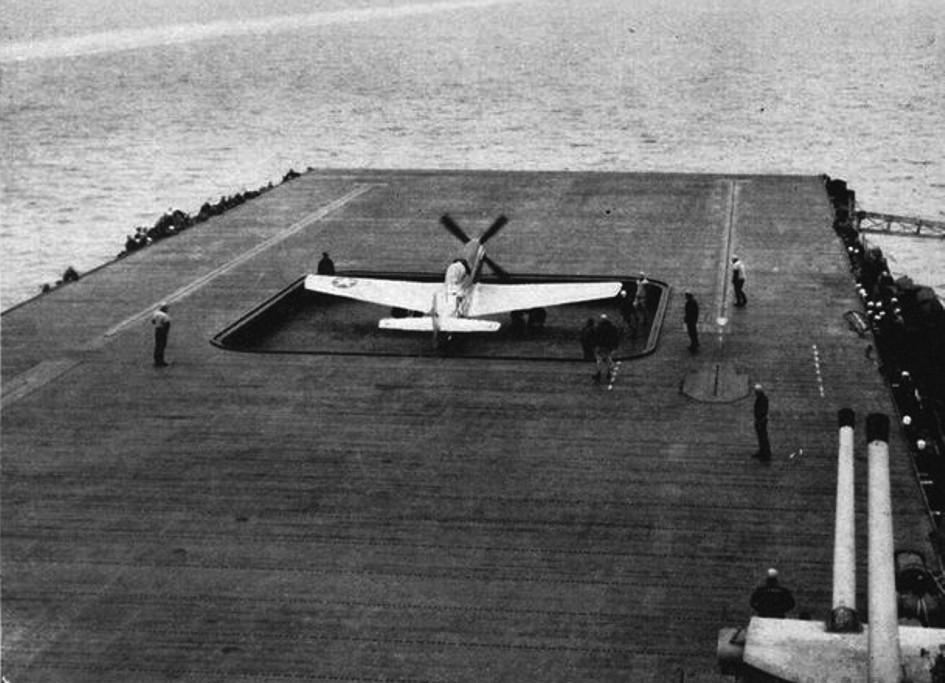
The lack of escorts for the B-29s became a growing concern. One of the solution that was considered was to have fighter launched from aircraft carriers located closer to Japan join the bombing raid. Even so, no naval fighter had enough range. The only fighter which seemed suitable for this was the North American P-51 Mustang.
The P-51 was conceived, designed and built by North American Aviation (NAA), under the direction of lead engineer Edgar Schmued, in response to a specification issued directly to NAA by the British Purchasing Commission; the prototype NA-73X airframe was rolled out on 9 September 1940, albeit without an engine, 102 days after the contract was signed and it was first flown on 26 October.[1] The Mustang was originally designed to use a low-altitude rated Allison V-1710 engine, and was first flown operationally by the Royal Air Force (RAF) as a tactical-reconnaissance aircraft and fighter-bomber. The definitive version, the P-51D, was powered by the Packard V-1650-7, a licence-built version of the Rolls-Royce Merlin 60 series two-stage two-speed supercharged engine, and armed with six .50 caliber (12.7 mm) M2 Browning machine guns. This article covers the various variants of the P-51.
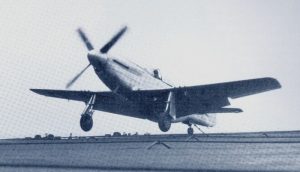
On 15 November 1944, naval aviator (and later test pilot) Lieutenant Bob Elder, in a P-51D-5-NA 44-14017, started flight tests from the deck of the carrier Shangri-La. This Mustang had been fitted with an arrestor hook, which was attached to a reinforced bulkhead behind the tail wheel opening; the hook was housed in a streamlined position under the rudder fairing and could be released from the cockpit. Thus modified, 44-14017 was redesignated ETF-51D and sent to Mustin Field, near Philadelphia, for initial testing in September 1944. The pilot in charge of testing the ETF-51D was Navy Lieutenant Robert M. Elder. He was an experienced naval test pilot who had already conducted carrier-suitability trials with several types of aircraft.The tests showed that the Mustang could be flown off the carrier deck without the aid of a catapult, using a flap setting of 20° down and 5° of up elevator. Landings were found to be easy, and, by allowing the tail wheel to contact the deck before the main gear, the aircraft could be stopped in a minimum distance.
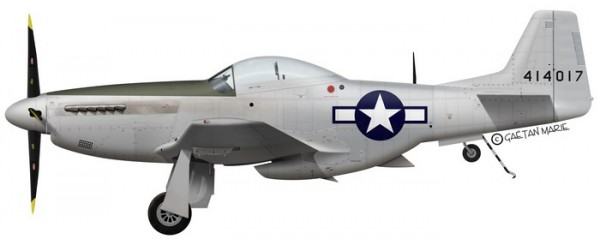
Navy Lieutenant Robert Elder made the first P-51 carrier landing on November 15, 1943. The carrier suitability trials ended after only 25 landings and launches were made. The airfields on the islands of Okinawa and Iwo Jima were taken over by US forces in early 1945, providing fighter units with forward bases to escort the bombers to mainland Japan. Thus a navalized P-51 was no longer required and the program was terminated.
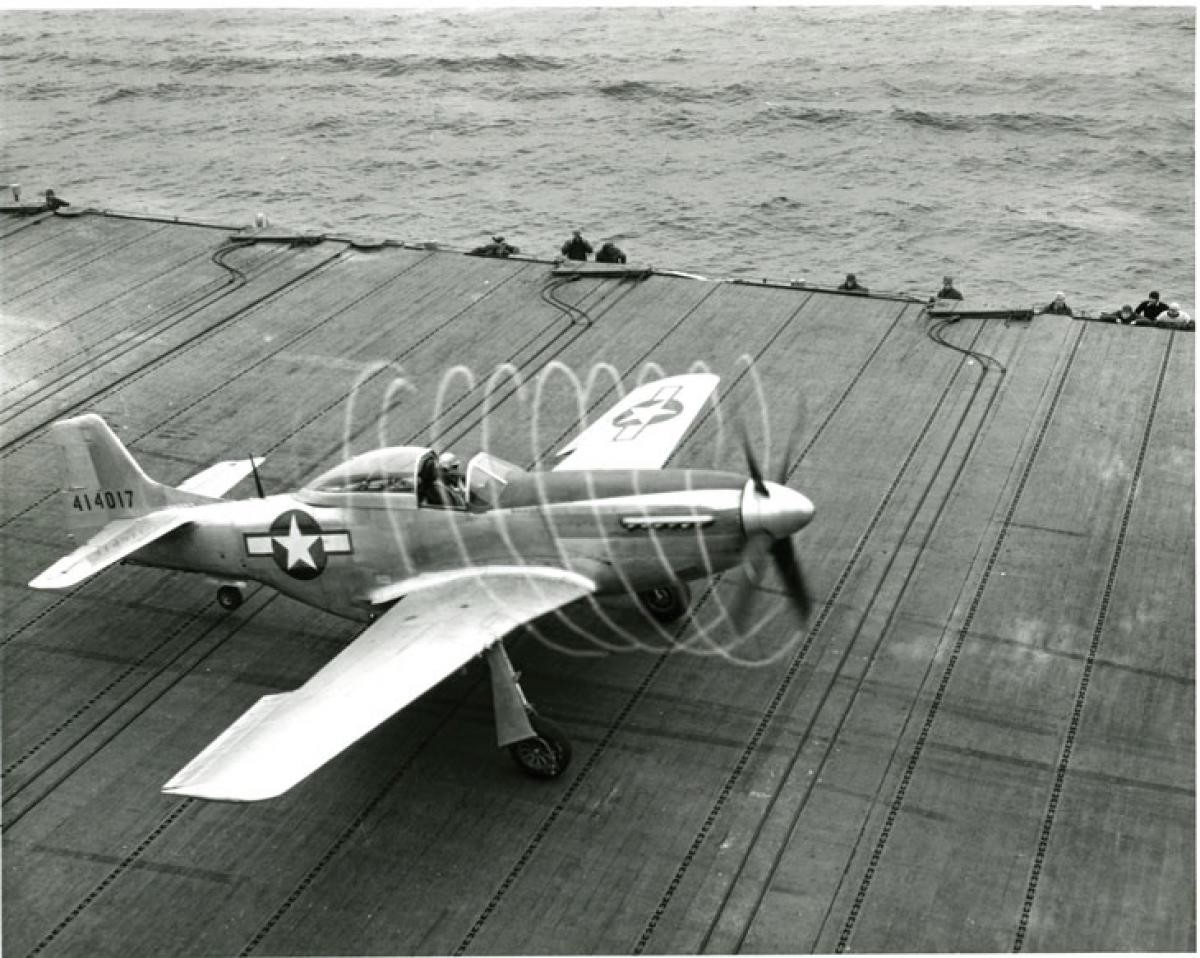
Sources:
Gaëtan Marie of Bravo Bravo Aviation.



Stephan
Most interested in your comment on the Japanese signal panic post Doolittle raid. I’m writing a paper at present which, as supporting comment, notes the effect on strategic decisions the Japanese made following the raid. It would be very helpful if you could point me in the direction of your source for the signal panic. A significant part of my paper covers what and when the Allies knew through Sigint. Regards Peter W
Check a book titled “Pacific Crucible War at Sea in the Pacific, 1941-1942” by Ian W. Toll, chapter 9, pp. 308 and 315. Toll mentions how Hypo could benefit from an increase in Japanese radio traffic in/about specific areas following USN operations in the same area.
I would also like to point out the panic caused post Doolittle raid led to the timetable for the Coral Sea operations being accelerated and the Japanesse high command deciding that they had to assault Midway which left their carrier fleet vulnerable
The Raid was not a military success in target damage. It was to boost moral and to show the Japanese people the islands could and WOULD be bombed.. The residual affect was not planned on and was not expected… None of the crew expected to get back at all…
When Doolittle was to met with his superiors after being returned from China he expected to be court marshaled for losing all his planes…I always found that humorous…
These facts and the sacrifice of the crews showed without a doubt America would not let Japan prevail in the Pacific…
Even Yamamoto said he would run wild for a year maybe 2 but if America was still in the war it could not be won and was only a matter of time till Japan was defeated….
The road toward winning the war was started upon with that attack… In my opinion of course
This article was great in that no place had I EVER heard anything about it…
Great Article